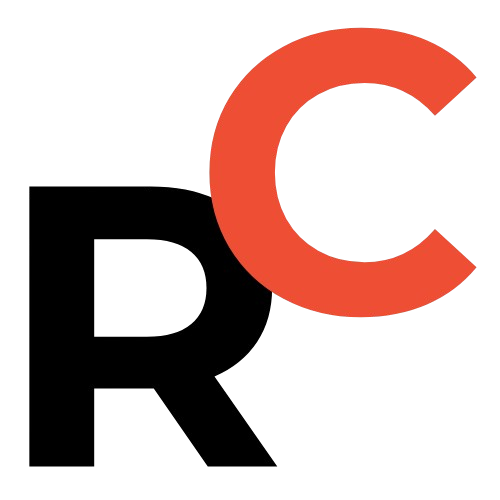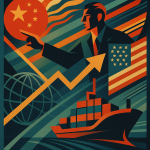Key Points
- IIF (国际金融协会): August saw $44.8 billion USD (¥322.6 billion RMB) of net inflows to emerging‑market portfolios, with China (中国) alone receiving about $39.0 billion USD (¥280.8 billion RMB) into bonds and equities.
- Revision note: July’s net inflows were revised to $38.1 billion USD (¥274.3 billion RMB), down from an initial estimate of $55.5 billion USD (¥399.6 billion RMB), highlighting volatility in monthly estimates.
- Concentration and regional tilt: Flows were concentrated toward China — emerging‑market equities outside China recorded a $7.4 billion USD (¥53.3 billion RMB) net outflow, while Asia (including China) drew about $18.1 billion USD (¥130.3 billion RMB).
- Hedge fund signals (高盛 Goldman Sachs): Prime‑services data showed global hedge funds’ net purchases of China in August were the highest since September 2024, and gross China exposures hit a two‑year high, signaling rising risk appetite for A‑shares (A股) and Hong Kong listings.
- China vs. other EMs: August’s flows show how differentiated investor sentiment can be across emerging markets — China currently benefits from a re‑rating and concentrated allocation increases.
- Bonds and equities both matter: Large bond inflows can compress yields and affect local currency dynamics, while equity inflows can lift valuations and liquidity.
- Macro drivers are still central: Fed easing expectations and global risk appetite drive cross‑border flows into EM assets.
- Hedge fund positioning: Rising gross exposures suggest investors are taking on more China-specific risk — monitor volatility and liquidity for active positions.
- Allocation strategy: If you’re an allocator or portfolio manager, consider how increasing weight to China changes your overall EM risk profile.

China assets saw a big spotlight in August as foreign investors poured capital into Chinese stocks and bonds.
Quick snapshot — what happened in August
The headline: The Institute of International Finance (IIF, Guójì Jīnróng Xiéhuì 国际金融协会) reported that in August foreign investors put close to $45.0 billion USD (¥324.0 billion RMB) into emerging‑market equity and bond portfolios.
Why it matters: That was the largest monthly total in about a year, and most of the money went into portfolios with exposure to China (Zhōngguó 中国).

Resume Captain
Your AI Career Toolkit:
- AI Resume Optimization
- Custom Cover Letters
- LinkedIn Profile Boost
- Interview Question Prep
- Salary Negotiation Agent

Key numbers from the IIF — headline data you can use
- Net inflows to emerging‑market portfolios in August: $44.8 billion USD (¥322.6 billion RMB).
- July revised net inflows: $38.1 billion USD (¥274.3 billion RMB) — revised down from an initial estimate of $55.5 billion USD (¥399.6 billion RMB).
- August a year earlier: $28.2 billion USD (¥203.0 billion RMB).
- China (bonds + equities) in August: $39.0 billion USD (¥280.8 billion RMB) net inflow.
- Emerging‑market bonds outside China: $13.2 billion USD (¥95.0 billion RMB) net inflow.
- Emerging‑market equities outside China: $7.4 billion USD (¥53.3 billion RMB) net outflow — a reversal after three months of inflows.

Regional breakdown — where the money went
IIF data shows flows by region in August:
- Asia: $18.1 billion USD (¥130.3 billion RMB).
- Latin America: $8.9 billion USD (¥64.1 billion RMB) — helped by bond flows into Mexico and Brazil.
- Emerging Europe: $8.7 billion USD (¥62.6 billion RMB).
- Middle East & North Africa: $5.8 billion USD (¥41.8 billion RMB).

Find Top Talent on China's Leading Networks
- Post Across China's Job Sites from $299 / role, or
- Hire Our Recruiting Pros from $799 / role
- Qualified Candidate Bundles
- Lower Hiring Costs by 80%+
- Expert Team Since 2014
Your First Job Post

What IIF economists said — sentiment, allocations, and differentiation
IIF senior economist Jonathan Fortun described August as “the weakest month for flows into emerging‑market equities since the spring,” driven by a sharp deterioration in sentiment toward markets outside China.
At the same time, flows into China stood out, which underscores China’s growing weight in many global emerging‑market allocations.

ExpatInvest China
Grow Your RMB in China:
- Invest Your RMB Locally
- Buy & Sell Online in CN¥
- No Lock-In Periods
- English Service & Data
- Start with Only ¥1,000

Supporting signs from Goldman Sachs (Gaoshēng 高盛)
Goldman Sachs prime‑brokerage/prime‑services data reinforced the picture of strong investor interest in China.
Goldman observed that global hedge funds’ net purchases of China assets in August hit the highest level since September 2024.
Goldman also reported that hedge funds’ gross China exposures reached a two‑year high — a clear signal of rising risk appetite for China‑focused positions, including both A‑shares (A股 A‑gǔ) and Hong Kong listings.

Macro backdrop and implications — why global markets mattered
Softer‑than‑expected U.S. inflation data increased market expectations of Federal Reserve rate cuts.
That dynamic typically encourages capital to seek higher yields in emerging markets, which likely helped support inflows to both Chinese and other emerging‑market assets.
But in August the flows showed a clear tilt toward China, not a broad-based EM rally.

Practical takeaways for investors, founders, and allocators
- China vs. other EMs: August’s flows show how differentiated investor sentiment can be across emerging markets — China currently benefits from a re‑rating and concentrated allocation increases.
- Bonds and equities both matter: Large bond inflows can compress yields and affect local currency dynamics, while equity inflows can lift valuations and liquidity.
- Macro drivers are still central: Fed easing expectations and global risk appetite drive cross‑border flows into EM assets.
- Hedge fund positioning: Rising gross exposures suggest investors are taking on more China-specific risk — monitor volatility and liquidity for active positions.
- Allocation strategy: If you’re an allocator or portfolio manager, consider how increasing weight to China changes your overall EM risk profile.

How to use these insights
If you’re an investor or founder tracking capital flows, watch the following:
- Monthly IIF flow updates — they show where global capital is actually moving.
- Prime‑broker reports (like Goldman Sachs) — they reveal hedge fund appetite and leverage patterns.
- Macro indicators: U.S. inflation, Fed guidance, and currency moves — all influence cross‑border allocations.

Bottom line
August’s numbers make one thing clear: China is the standout recipient of foreign capital among EMs right now.
Global investors are showing rising appetite for China through both equities and bonds, even as sentiment toward non‑China EM equities weakened.
China assets remain heated, and that positioning matters for anyone allocating to emerging markets — keep watching flows, macro cues, and hedge fund exposure trends.

References
- China assets keep heating up — IIF: August nearly $39B–$45B foreign net inflows to Chinese stocks and bonds – Cailian Press (财联社)
- Emerging markets portfolio flows (August 2025) — Institute of International Finance (IIF, 国际金融协会)
- Hedge fund positioning & prime services data — Goldman Sachs (高盛)
Keywords: China assets
China assets still sizzling.


